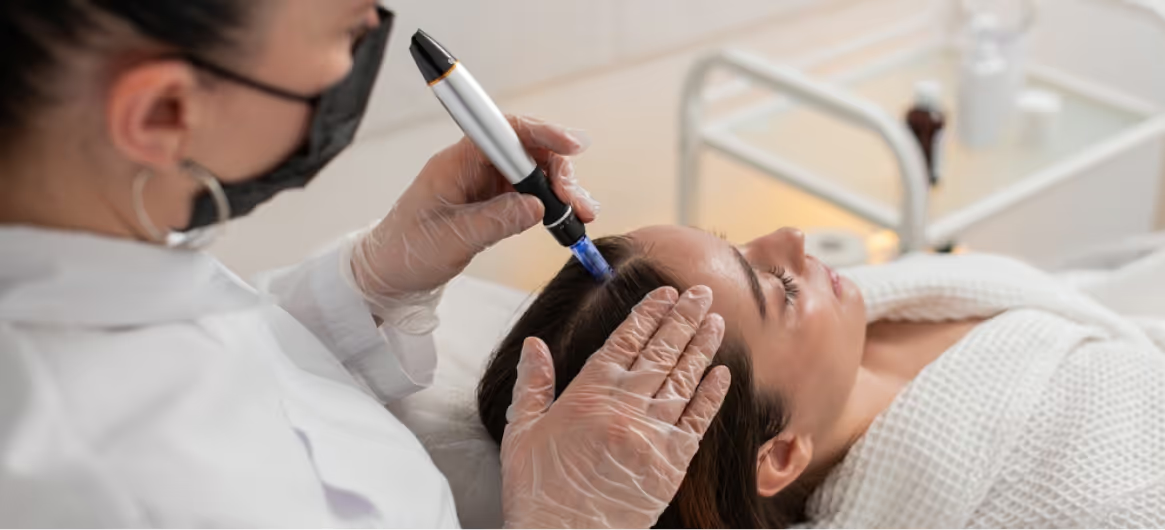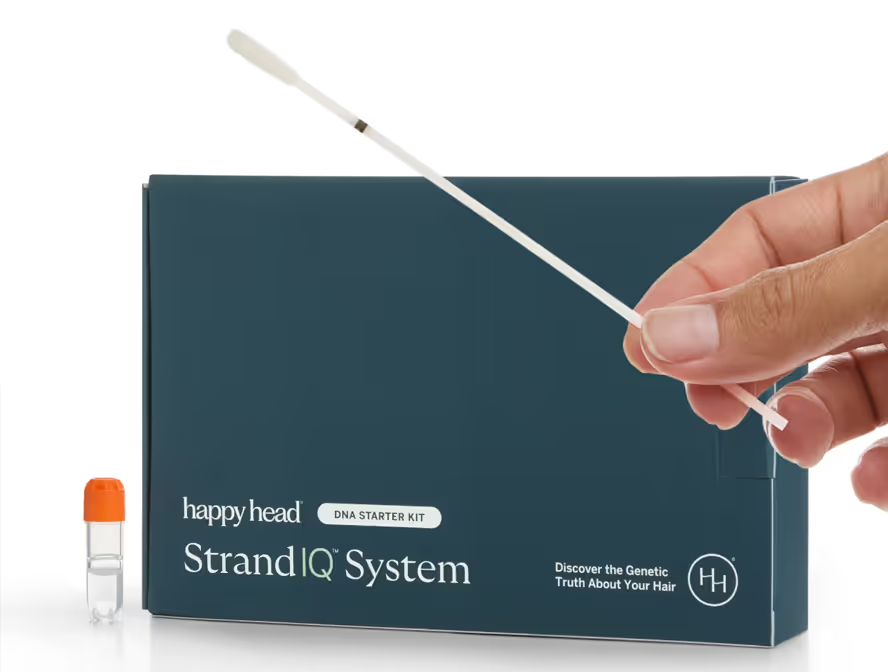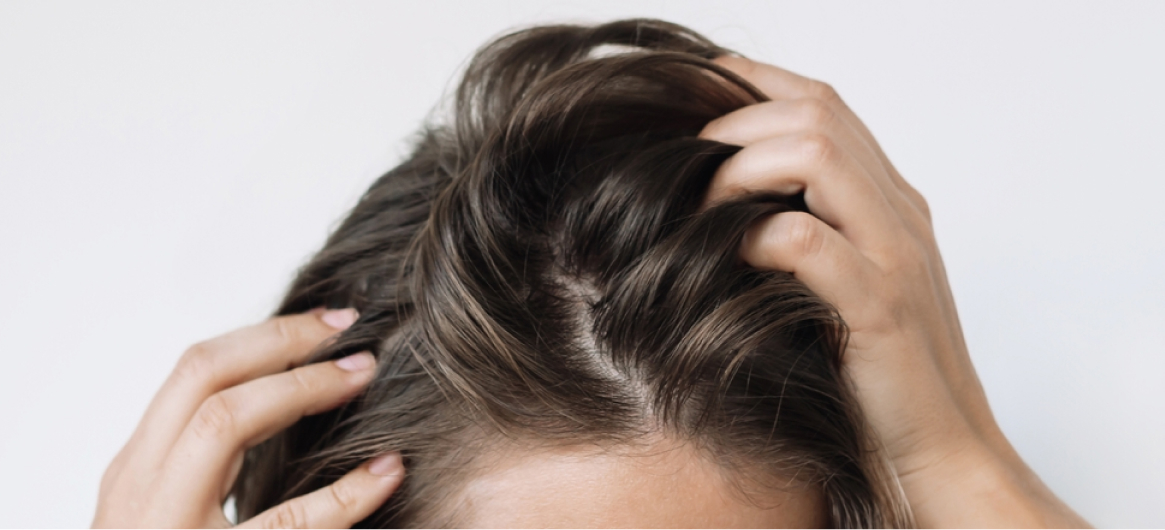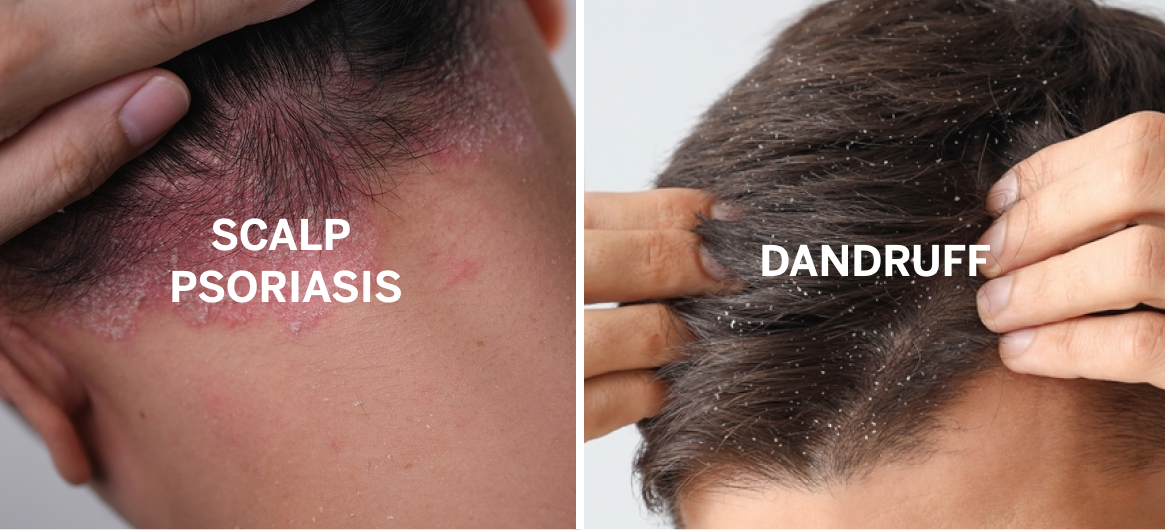You may not be very familiar with exosomes for hair loss yet, but their role in regenerative medicine is certainly generating interest among dermatologists exploring advanced, non-surgical treatment options.
These microscopic messengers, which are naturally released by cells, carry signals that influence healing, inflammation, and cell behavior.
When applied to the scalp, they offer a promising way to support follicle recovery and promote healthier growth without relying on hormones or invasive procedures.
For those seeking a science-backed approach to hair restoration, exosomes may be worth a closer look.
What Are Exosomes for Hair Loss?
Exosomes are tiny extracellular vesicles, roughly 30 to 150 nanometers in size, that are naturally released by cells. These vesicles carry a rich cargo of growth factors, proteins, lipids, and RNA necessary for cell communication and tissue regeneration.
In the context of hair restoration, exosomes are derived from mesenchymal stem cells (usually from umbilical cord tissue) and introduced into the scalp to deliver regenerative signals directly to hair follicles.
This process is designed to rejuvenate dormant or damaged follicles, reduce inflammation, and promote healthier, thicker hair growth.
How Exosomes Work To Support Hair Growth
Exosomes communicate with cells in the scalp by transferring bioactive molecules that influence gene expression, inflammation, and cellular repair.
When introduced into the scalp, they release growth factors such as VEGF, FGF, IGF-1, Wnt proteins, and transforming growth factor-beta (TGF-β), which are known to stimulate hair follicle activity.
These signals can reactivate follicles that have entered the resting (telogen) phase, extend the growth (anagen) phase, and even increase the size and function of miniaturized follicles.
This cellular signaling network helps promote healthier, denser hair and may slow or reverse progressive thinning.
Studies on Exosomes for Hair Loss Are Promising
The therapeutic potential of exosomes is supported by growing preclinical and early clinical research.
Studies suggest that exosomes derived from mesenchymal stem cells can enhance hair follicle regeneration by promoting angiogenesis, modulating immune responses, and encouraging follicular stem cell proliferation.
For instance, a 2024 study found that exosomes from adipose-derived stem cells enhanced hair regrowth in mice with induced androgenetic alopecia by increasing dermal papilla cell activity and blood vessel formation.
Although human studies are still limited, early findings are promising and suggest that exosomes may serve as a potent regenerative tool for certain types of hair loss.
Benefits of Using Exosomes for Hair Loss
Exosomes offer a novel, cell-free approach to hair restoration that goes beyond symptom management. By leveraging the regenerative signals naturally released by stem cells, exosome therapy targets the underlying biological processes that contribute to thinning hair.
Patients considering this treatment may benefit from a multi-layered effect—enhanced follicle activity, reduced inflammation, improved scalp environment, and potential repair of follicular damage—all without surgery or hormone-based medications.
Promotes Hair Follicle Growth
Exosomes are packed with growth factors such as VEGF (vascular endothelial growth factor) and FGF (fibroblast growth factor), which stimulate the proliferation and activation of dermal papilla cells—the cells responsible for regulating hair follicle development.
When introduced into the scalp, these vesicles encourage dormant follicles to re-enter the anagen (growth) phase, resulting in thicker and more active hair follicles. This regenerative activity can lead to visible improvements in hair density and overall scalp coverage over time.
Encourages the Growth of New Blood Vessels
Healthy hair follicles rely on a rich supply of oxygen and nutrients delivered through the blood. Exosomes stimulate angiogenesis—the formation of new blood vessels—by delivering pro-angiogenic growth factors such as VEGF.
Increased vascularization enhances scalp circulation, which in turn supports stronger, more resilient follicles and may improve the overall health of the scalp. This effect helps create a more supportive environment for sustained hair regrowth and maintenance.
Helps Regulate the Hair Growth Cycle
Hair follicles naturally cycle through growth (anagen), rest (telogen), and shedding (catagen) phases. Disruption in this cycle—often caused by stress, illness, or genetic factors—can lead to thinning hair.
Exosomes help restore balance by signaling follicular cells to remain in or return to the anagen phase longer. They also reduce the frequency and duration of the telogen phase, which may lead to a higher percentage of actively growing hairs on the scalp at any given time.
Can Reduce Scalp Inflammation
Chronic inflammation in the scalp can impair follicle function and accelerate hair loss. Exosomes have anti-inflammatory properties due to their cargo of cytokines and microRNAs, which can downregulate pro-inflammatory pathways.
By calming an overactive immune response, exosome therapy may help preserve follicular health, particularly in conditions with an inflammatory component, such as androgenetic alopecia or early-stage scarring alopecias, and contribute to a healthier scalp environment overall.
May Protect Hair Follicle Stem Cells
Hair follicle stem cells are vital for ongoing follicle regeneration. However, they can become damaged or less active with age or exposure to inflammation and oxidative stress.
Exosomes can support the viability and function of these stem cells by delivering protective molecules such as anti-apoptotic proteins and regulatory RNAs. Preserving the activity of these cells may help prolong hair growth capacity and reduce the pace of follicular miniaturization.
Could Potentially Help With Hair Follicle Scarring
In early or mild cases of scarring alopecia, exosomes may provide a chance to intervene before permanent damage occurs. Their regenerative signals help promote tissue remodeling and modulate immune activity, which could slow or even partially reverse the scarring process.
Although more clinical data is needed, there is growing interest in using exosomes as a supportive therapy in combination with anti-inflammatory treatments for conditions such as lichen planopilaris or frontal fibrosing alopecia.
Who Should Consider Exosomes for Hair Loss?
Exosome therapy for hair loss can be beneficial for a wide range of people experiencing hair thinning or shedding. Both men and women who are looking for a natural, noninvasive approach to hair restoration may find exosomes to be a suitable option.
Ideal Candidates for Exosome Therapy
The best candidates for exosome hair loss treatment are those with mild to moderate hair thinning or shedding.
This includes individuals with androgenetic alopecia (male or female pattern baldness), telogen effluvium (temporary hair loss due to stress or other factors), or age-related hair thinning.
Exosome therapy may also be a good option for those who have tried other hair loss treatments without success or for those who prefer a more natural approach to hair restoration.
Since exosomes work by rejuvenating existing follicles rather than creating new ones, candidates with active follicular units typically see the best results.
Types of Hair Loss That May Respond to Exosomes
Exosome therapy shows potential for several types of hair loss, particularly those with inflammatory or degenerative components, where follicular function is impaired but not entirely lost. These may include:
- Androgenetic Alopecia (Male or Female Pattern Hair Loss): Especially in early to mid stages.
- Telogen Effluvium: When caused by stress, illness, or hormonal shifts, if the follicle remains viable.
- Alopecia Areata: Some patients may benefit, although autoimmune activity must be controlled.
- Traction Alopecia: If diagnosed early, before scarring occurs.
- Postpartum or Menopausal Thinning: When due to hormonal fluctuation, if follicles remain intact.
- Early-Stage Scarring Alopecia: May help slow progression when used alongside medical therapies.
- Age-Related Hair Thinning: Can help rejuvenate aging hair follicles and support the growth of healthier, thicker hair.
Patients with completely fibrotic or scarred follicles may not see improvement, as exosomes require viable follicular structures to exert their effects.
What To Expect During Exosome Hair Loss Treatment
Exosome hair loss treatment is a relatively simple process. It typically involves the topical application of an exosome-rich solution directly to the scalp, allowing the growth factors and signaling molecules to penetrate the hair follicles.
The Treatment Process Step by Step
- Consultation: Before beginning treatment, you'll have a consultation with a dermatologist to assess your individual needs and determine if exosome therapy is right for you.
- Preparation: Your scalp will be cleaned and prepared for the application of the exosome solution. This ensures that the exosomes can effectively penetrate the hair follicles without any barriers. Microneedling may be part of the preparation process in some cases.
- Application: The exosome solution is then carefully applied to the scalp, focusing on the areas of hair thinning or loss. The solution is typically left on the scalp for a period of time to allow for maximum absorption.
- Aftercare: Following the treatment, you may be given specific instructions for caring for your scalp and hair. This may include avoiding certain medications or hair products for a while to allow the exosomes to work effectively.
How Many Sessions Are Usually Needed?
The number of exosome treatment sessions required can vary depending on the individual and the extent of their hair loss. In general, a series of treatments spaced several weeks apart is recommended for optimal results.
Timeline for Seeing Results
Although individual results may vary, many people begin to notice improvements in hair thickness and density within a few months of starting exosome therapy. Hair growth is a gradual process, and full results may take several months to become apparent.
Adherence to the recommended treatment plan can help maximize results over time. It's also essential to maintain a healthy scalp environment and overall lifestyle to support optimal hair growth.
Are Exosomes for Hair Loss Safe?
One of the significant advantages of exosome therapy for hair loss is its safety profile. Because exosomes are derived from natural sources and work by harnessing the body's own regenerative processes, they are generally well-tolerated with minimal risk of side effects.
Possible Side Effects and Risks
While exosome therapy is considered safe for most people, there are some potential side effects to be aware of. These may include:
- Scalp irritation or redness: Some people may experience mild irritation or redness at the application site, particularly if they have sensitive skin. This typically resolves on its own within a few hours to a day.
- Allergic reactions: In rare cases, an individual may have an allergic reaction to one of the components in the exosome solution. Symptoms may include itching, swelling, or difficulty breathing. It's important to discuss any allergies or sensitivities with your doctor before beginning treatment.
- Infection: As with any topical treatment, there is a small risk of infection if proper hygiene and aftercare instructions are not followed. It's important to keep the scalp clean and avoid picking or scratching at the application site to minimize this risk.
How Exosome Safety Compares to Other Options
Compared to other treatments, such as hair loss products or surgical procedures, exosome therapy has a favorable safety profile. For example, finasteride can cause side effects such as decreased libido or sexual dysfunction, and hair transplants carry risks associated with anesthesia and infection.
Exosomes, however, work with the body's natural processes and have minimal risk of systemic side effects. This makes them a compelling option for those seeking a safer, more natural approach to hair restoration.
Exosomes for Hair Loss: Accessibility and Cost
Exosomes for hair loss are still considered experimental and are not approved by the FDA. While some clinics offer the treatment under physician supervision, it is not available over the counter, and no reputable at-home products containing exosomes currently exist.
Consumers should be cautious of OTC serums or shampoos claiming to contain exosomes, as these are unregulated and often lack verified active ingredients. For now, legitimate exosome therapy should only be administered by qualified medical professionals within a clinical setting.
Average Price Range for Exosome Therapy
The cost of exosome therapy for hair loss can range from $2,000 to $6,500 per session, depending on the provider, location, and the formulation used. Some patients may require multiple sessions spaced several months apart for optimal results.
Because exosome treatment is not FDA-approved, it is not covered by insurance. Patients should ensure they’re working with a board-certified dermatologist or licensed medical provider offering lab-verified exosome products to avoid ineffective or counterfeit treatments.
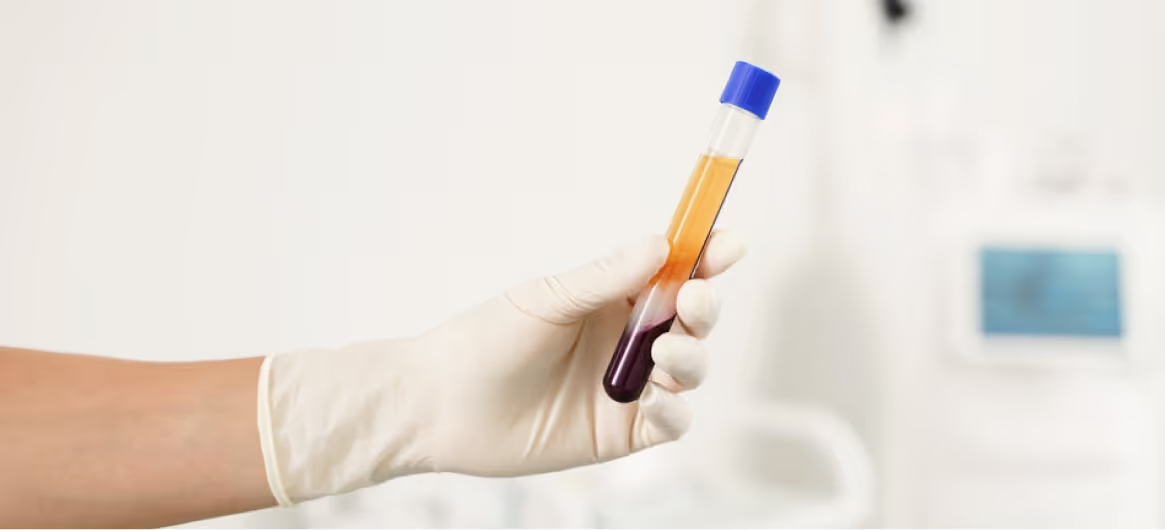
Exosomes vs. PRP Therapy
Exosomes and platelet-rich plasma (PRP) are both regenerative therapies for hair loss, but they differ in source, potency, and mechanism. PRP is derived from the patient’s own blood and contains growth factors that promote healing and follicle stimulation.
Exosomes, by contrast, are cell-derived vesicles containing a highly concentrated mix of signaling molecules, including RNA, proteins, and lipids.
While PRP depends on the patient’s biological quality, exosomes offer a standardized, cell-free alternative that may deliver more consistent and potent regenerative effects.
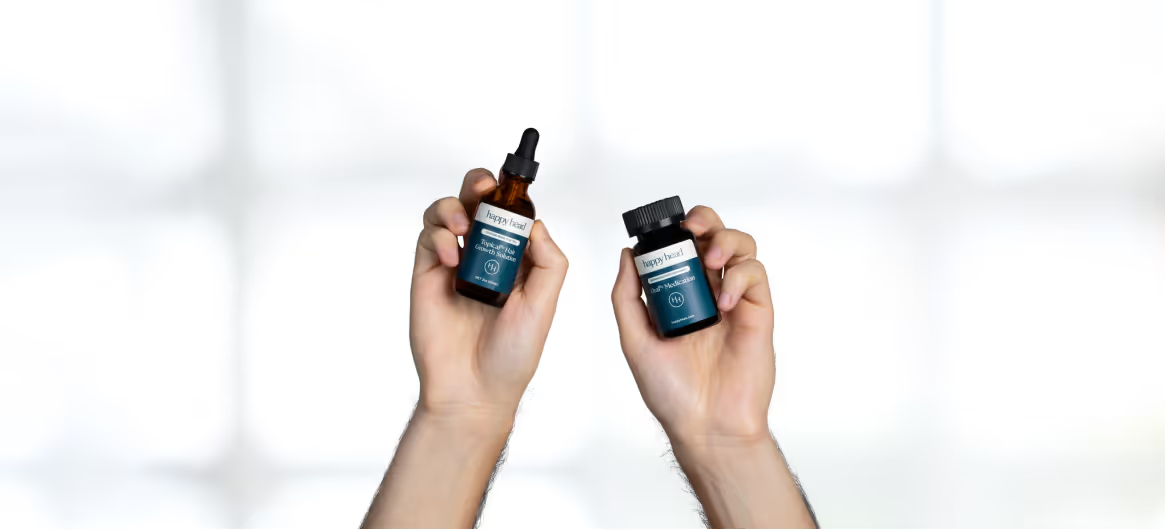
Exosomes Compared to Traditional Hair Loss Treatments
Traditional hair loss treatments often target specific pathways, such as hormones or blood flow, while exosomes take a broader, regenerative approach.
Rather than suppressing a process or stimulating one function, exosomes restore the overall follicular environment by influencing cellular repair, inflammation, and signaling. Here's how they compare to commonly used therapies:
- Minoxidil: A vasodilator available in topical and oral forms that improves blood flow to hair follicles and prolongs the growth (anagen) phase. Unlike exosomes, minoxidil does not regenerate damaged follicles or alter the scalp’s cellular environment. It must be used continuously to maintain results.
- Finasteride: A prescription medication that blocks type II 5-alpha-reductase to reduce dihydrotestosterone (DHT), a hormone linked to hair follicle miniaturization. Finasteride prescription treats androgenetic alopecia, primarily in men. Exosomes do not affect hormones but may help reverse damage caused by DHT.
- Dutasteride: A stronger DHT blocker than finasteride, inhibiting both type I and II 5-alpha-reductase enzymes. It’s used for more aggressive hair loss but shares similar risks, including potential sexual side effects. Exosomes may complement but not replace dutasteride for those with severe hormonal hair loss.
- Spironolactone: An antiandrogen primarily used in women to block androgen receptors and reduce DHT production. It's helpful for female pattern hair loss. Exosomes are hormone-free and may be safer for those seeking non-hormonal alternatives or adjunctive support.
- Low-Level Laser Therapy (LLLT): Devices such as laser helmets or caps use light energy to stimulate mitochondrial activity in scalp cells. While it may improve circulation and follicle health, its effects are generally modest. Exosomes may offer a more robust regenerative response by delivering active biological signals.
- Hair Transplant Surgery: A procedure in which healthy follicles are moved from one part of the scalp to thinning areas. It’s permanent but invasive and costly. Exosomes are non-surgical and may be used before or after transplants to improve scalp health and graft survival.
Are Exosomes for Hair Loss Right for You?
Exosome therapy represents an exciting frontier in regenerative hair restoration, offering a non-hormonal, cell-free option for those seeking alternatives to traditional treatments.
While still considered experimental, early results are promising, especially for those in the early stages of hair thinning with viable follicles.
Ultimately, the best hair loss treatment option for you will depend on your individual needs, preferences, and medical history. Consult with your dermatologist to determine if using exosomes for hair loss is suitable for your specific type of hair loss, lifestyle, and overall goals.
Talk to a board-certified dermatologist to discuss your goals and find the solution that is best for you.
Frequently Asked Questions
Do exosomes really work for hair loss?
Early clinical research and anecdotal reports suggest that exosomes may help improve hair density and scalp health by promoting follicle regeneration and reducing inflammation. However, larger-scale studies are needed to confirm long-term effectiveness.
How much does exosome treatment cost for hair loss?
Exosome hair restoration treatments typically range from $2,000 to $6,500 per session. Costs vary based on the provider, geographic location, and number of sessions required. Because it's considered experimental, exosome therapy is not usually covered by insurance.
Which is better for hair loss, PRP or exosomes?
Both PRP (platelet-rich plasma) and exosome treatments are used to promote hair growth, but exosomes are believed to contain more growth factors and may offer more potent results. Individual responses can vary, so a consultation with a specialist is recommended.
Is exosome hair treatment better than minoxidil?
Exosome therapy works differently from minoxidil. While minoxidil increases blood flow to prolong hair growth phases, exosomes may promote regeneration at the cellular level. For some, exosomes provide more noticeable results, but long-term studies comparing both are still limited.



